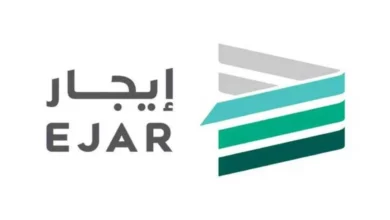10 Best Practices for Maintaining Heavy Equipment sentigum.com

Maintaining heavy equipment is crucial for maximizing efficiency, minimizing downtime, and ensuring safe operation. By following these 10 best practices sourced from experts at Sentigum.com, you can optimize the performance and longevity of your machinery.
Overview of the importance of maintaining heavy equipment
Regular maintenance is essential for heavy equipment to achieve and sustain peak performance. It helps prevent unexpected breakdowns, reduces downtime, and extends the lifespan of your equipment. By conducting routine inspections, lubricating components, and replacing worn-out parts, you can improve efficiency and reduce operational costs. Neglecting maintenance can lead to safety hazards and increased fuel consumption. Prioritizing regular maintenance allows operators to identify and address potential issues before they escalate, ensuring both efficiency and safety.
Remember to establish a regular maintenance schedule, conduct thorough inspections, clean and lubricate your equipment properly, and provide training to operators. By implementing these best practices, you can optimize the efficiency of your heavy equipment and enjoy reliable performance for years to come.
Regular Inspections and Maintenance
The significance of regular inspections and maintenance for heavy equipment
Regular inspections and maintenance are crucial for ensuring the optimal performance and longevity of heavy equipment. By adhering to a well-structured maintenance schedule, operators can prevent unexpected breakdowns, reduce downtime, and maximize efficiency. Routine inspections, lubrication, and component replacements are just a few examples of necessary maintenance tasks that can significantly extend the lifespan of heavy equipment. Neglecting maintenance can lead to a decline in efficiency, increased operational costs, and safety hazards. By prioritizing regular inspections and maintenance, operators can identify and address potential issues before they escalate, ensuring both efficiency and safety.
Proper lubrication is essential for maintaining heavy equipment and ensuring optimal performance. Implementing best practices for lubrication can help companies achieve improved equipment reliability and reduce maintenance costs. Here are some key practices to follow:
- Assess lubrication tasks: Ensure that all lubrication tasks are completed at the right time, with the right lubricant and quantity, using the right processes.
- Use a labeling system: Implement a labeling system to ensure the correct lubricant is added to each piece of equipment, especially in large plants where multiple types of lubricants are used.
- Control cleanliness: Use cleanliness-control centers to store and transfer lubricants in a contamination-free environment. Fit air breathers to containers and filter oil to maintain cleanliness.
- Efficient dispensing: Use color-coded grease guns for different types of grease to avoid mixing. Ensure dispensing equipment is safe, clean, and easy to use.
- Filter and analyze oil: Utilize online and offline filtering systems to clean up oil, and analyze oil against ISO 4406 standards to maintain proper cleanliness levels.
- Prevent spills: Implement strategies to prevent lubricant spills and contamination of the environment.
- Knowledge management: Provide training to maintenance workers on the benefits of good lubrication practices and reliability-based maintenance strategies.
Implementing these best practices can help maximize equipment lifespan, enhance safety, reduce downtime, improve performance, and achieve cost savings in heavy equipment maintenance.
Cleaning and Washing
When it comes to maintaining heavy equipment, cleaning and washing play a crucial role in preventing damage and corrosion.
The importance of cleaning and washing heavy equipment to prevent damage and corrosion
- Prevent Rust: Regular cleaning removes dirt, debris, and corrosive substances that can lead to rust formation on metal surfaces.
- Extend Lifespan: By removing dirt and grime, cleaning helps to preserve the integrity of the equipment, reducing wear and tear and extending its lifespan.
- Maintain Performance: Clean equipment operates more efficiently, ensuring optimal performance and productivity.
- Identify Issues: Cleaning allows for a thorough inspection of the equipment, helping to identify any potential issues or maintenance needs.
- Enhance Safety: Clean equipment reduces the risk of accidents caused by slippery surfaces or malfunctioning parts.
- Protect Resale Value: Regular cleaning and maintenance contribute to preserving the resale value of heavy equipment.
- Comply with Regulations: Many industries have specific regulations regarding equipment cleanliness, and regular cleaning ensures compliance.
- Promote Professionalism: Clean equipment reflects positively on your business, conveying a sense of professionalism and attention to detail.
- Avoid Contamination: Cleaning prevents the buildup of contaminants that can affect the performance of sensitive components.
- Easier Repairs: A clean machine is easier to work on, making repairs and maintenance tasks more efficient.
By following these best practices for cleaning and washing heavy equipment, you can ensure its longevity, performance, and overall value for your business.
Monitoring Fluid Levels
How to effectively monitor fluid levels in heavy equipment for smooth operation
To ensure the smooth operation of heavy equipment, it is crucial to monitor fluid levels regularly. Here are 10 best practices for maintaining fluid levels:
- Follow the manufacturer’s guidelines: Refer to the equipment’s manual for specific instructions on fluid types, capacities, and recommended service intervals.
- Keep manuals accessible: Store equipment manuals on-site for easy reference by operators.
- Conduct routine inspections: Regularly check fluid levels and look for signs of leaks or contamination.
- Use proper storage containers: Store fluids in designated containers to maintain cleanliness and prevent contamination.
- Install dispensing filters: Some fluids may require passing through a filter before entering storage tanks.
- Seal containers tightly: Ensure containers are properly sealed to prevent leakage and maintain fluid quality.
- Wear protective equipment: Use gloves and other protective gear when handling fluids to protect your skin and keep components clean.
- Partner with a fluid distributor: Consider working with a distributor that offers clean mobile fluid services for efficient delivery and maintenance.
- Implement a preventative maintenance program: Detect minor issues before they become major problems through regular maintenance checks.
- Utilize fluid analysis: Monitor fluid conditions through analysis to anticipate maintenance needs and ensure optimal performance.
By following these best practices, you can effectively monitor fluid levels in heavy equipment, ensuring smooth operation and prolonging the lifespan of your machinery.
Training and Education
The role of training and education in maintaining heavy equipment and preventing accidents
Proper training and education play a crucial role in maintaining heavy equipment and preventing accidents. By providing comprehensive training programs, operators can learn how to properly operate and maintain the equipment, reducing the risk of breakdowns and accidents. Training should cover topics such as equipment operation, safety protocols, maintenance procedures, and best practices. Additionally, ongoing education ensures that operators stay up-to-date with the latest advancements in equipment technology and maintenance techniques. By investing in training and education, companies can improve safety, extend the lifespan of their equipment, and minimize costly repairs.
Timely Repairs and Replacements
The importance of timely repairs and replacements to avoid costly breakdowns
Proper maintenance of heavy equipment is crucial for its optimal performance and longevity. One of the key practices in maintaining heavy equipment is ensuring timely repairs and replacements. By addressing potential issues promptly, you can prevent costly breakdowns and minimize downtime.
Regular inspections are essential to identify signs of wear, damage, leaks, or abnormal sounds. If any issues are discovered, they should be promptly addressed by a qualified technician. Ignoring small problems can lead to more complex repairs and expensive downtime.
Replacing worn-out parts and fluids according to the manufacturer’s recommendations is also important. This helps to prevent equipment failure and ensures smooth operation.
By prioritizing timely repairs and replacements, you can extend the lifespan of your heavy equipment, improve safety, and avoid costly breakdowns. It is an investment that pays off in the long run.
Best practices for storing and protecting heavy equipment during periods of inactivity
When heavy equipment is not in use, it is important to properly store and protect it to ensure its longevity and optimal performance. Here are some best practices to follow:
- Clean and grease the equipment before storage to prevent dirt and debris from causing damage.
- Top off fuel and oil tanks to prevent condensation and contamination.
- Check tire pressure and inflate slightly above recommended levels to prevent flattening.
- Tighten nuts and screws to keep parts in place.
- Paint over chipped areas to protect against rust.
- Face the equipment towards the pathway for easy identification.
- Fill the tank when storing equipment during winter to prevent fuel line contamination.
- Maintain proper spacing between machinery to prevent collisions.
- Keep detailed records of maintenance activities.
- Follow manufacturer guidelines for maintenance schedules and specific requirements.
By following these best practices, you can ensure that your heavy equipment remains in optimal condition during periods of inactivity, reducing the risk of damage and costly repairs.
Keeping detailed documentation and records of heavy equipment maintenance is crucial for the smooth operation and longevity of your machinery. Here are some key benefits of maintaining these records:
- Prevent expensive repairs: Routine inspections and small repairs can help identify and address issues before they become major problems, saving you money on costly repairs.
- Create specialized maintenance programs: Each piece of equipment has different working conditions and limitations. By documenting maintenance works, you can create tailored maintenance programs for each machine in your fleet.
- Process warranty claims: Keeping a record of all maintenance work done on your equipment makes it easier to process warranty claims, ensuring you receive the benefits you are entitled to.
- Increase operator safety: Well-maintained equipment reduces the risk of accidents due to malfunctioning machinery, keeping your operators safe on the job.
- Track accountability: Documenting maintenance history helps track who is accountable for any damage inflicted on your machinery, encouraging operators to take better care of the equipment.
- Increase resale value: A detailed maintenance record can increase the resale value of your equipment, as potential buyers can see that it has been well taken care of.
By prioritizing documentation and record-keeping, you can ensure the optimal performance and safety of your heavy equipment while maximizing its lifespan and value.
Conclusion
In conclusion, maintaining heavy equipment is crucial for its optimal performance, longevity, and safety. By following the 10 best practices for maintaining heavy equipment sourced from experts at Sentigum.com, you can ensure that your equipment operates efficiently and avoids costly breakdowns. Regular inspections, proper lubrication, regular cleaning, scheduled maintenance, comprehensive training for operators, timely component replacement, fluid analysis, strict safety measures, and documentation are all essential for maintaining heavy equipment. By prioritizing these practices, you can maximize the lifespan of your equipment, enhance safety, reduce downtime, improve performance, save costs, and comply with manufacturer guidelines.
Summary of the 10 best practices for maintaining heavy equipment on sentigum.com
- Regular inspections to identify potential issues early on.
- Proper lubrication of moving parts.
- Regular cleaning and washing to remove dirt and debris.
- Implementing a scheduled maintenance program.
- Storing equipment in a dry and secure location when not in use.
- Providing comprehensive training to equipment operators.
- Timely replacement of worn or damaged components.
- Regular fluid analysis to detect potential problems.
- Enforcing strict safety measures.
- Maintaining detailed documentation and records of maintenance activities.
By following these best practices, you can ensure the optimal performance and longevity of your heavy equipment.



